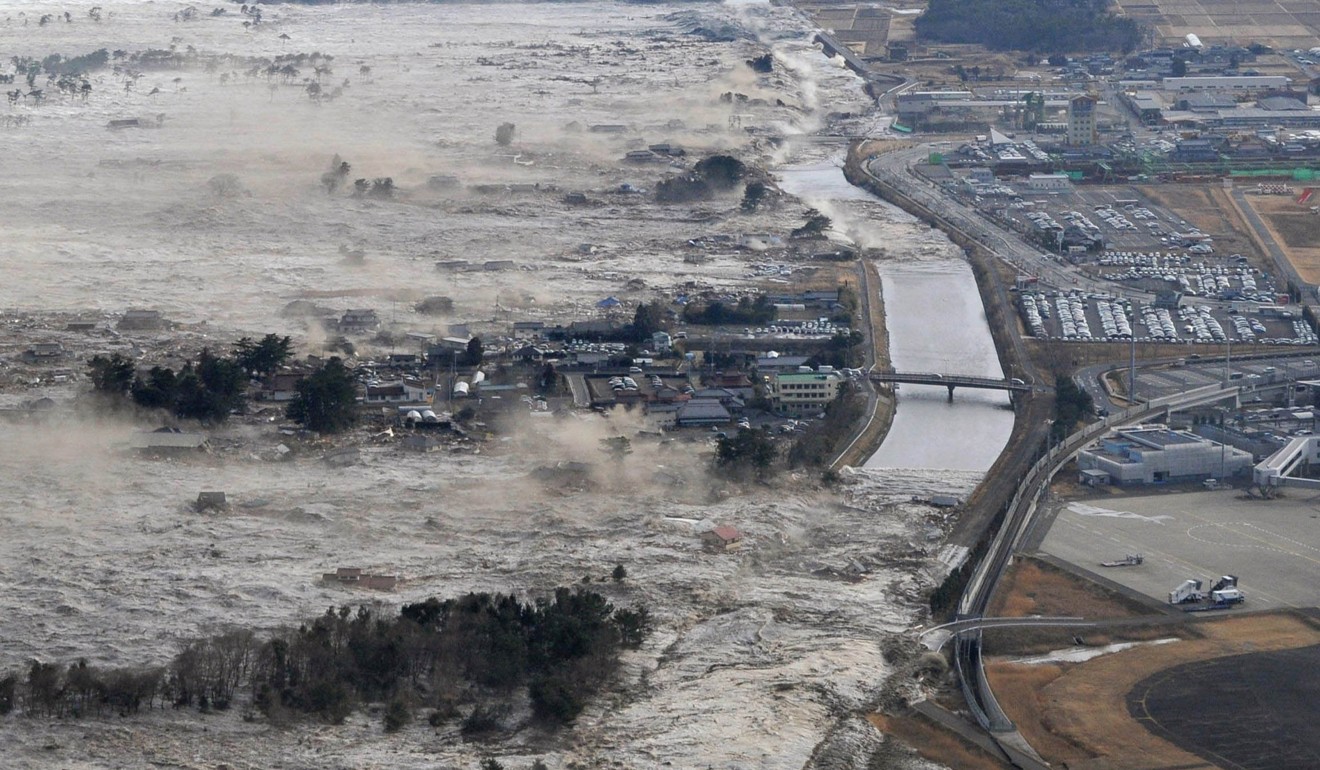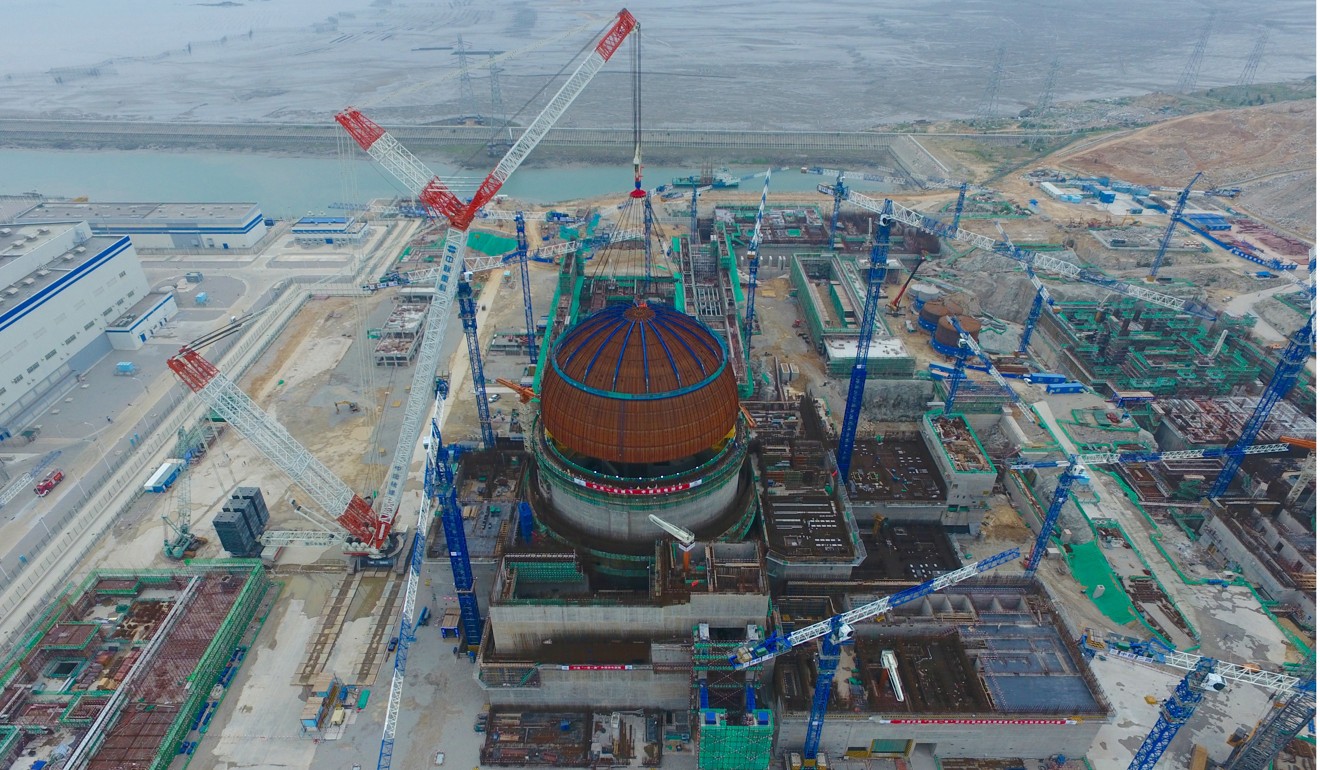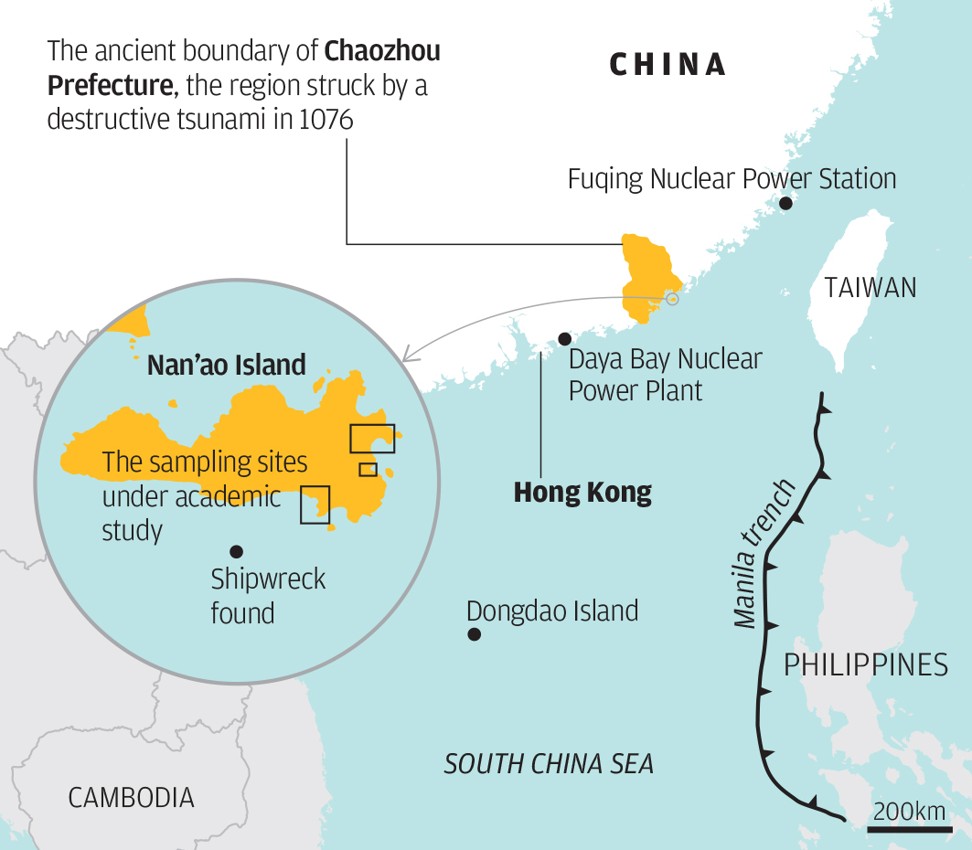
Scientists say a tsunami hit China 1,000 years ago – and there’s still a risk of a giant wave hitting today
- Chinese study finds coast of what is today’s Guangdong province was struck by catastrophic event in AD1076
- Researchers call on government to consider the threat in future planning, especially for nuclear power plants and key infrastructure projects
A study by Chinese researchers has found that a tsunami almost wiped out civilisation in what is today’s Guangdong province about 1,000 years ago, highlighting the risk of destructive sea waves to the country’s coastal areas.
The academics who carried out the research have called on the Chinese government to take that risk into account in future planning – especially in relation to strategic facilities such as nuclear power plants and key infrastructure projects under the “Belt and Road Initiative”.
“This study confirms the risk of tsunamis in the South China Sea. Such risks should be considered in future planning and construction of nuclear power plants, harbours and petroleum reserve structures on the coastlines of China,” the researchers wrote in a paper published in the January issue of Chinese Science Bulletin.
Before this tsunami, Krakatoa’s eruption in 1883 rocked the world
China’s belt and road trade plan aims to link the country with Asia, Africa, Europe and beyond via land and sea, and Beijing has invested hugely in ports, railways, roads, power plants and other infrastructure projects overseas.

When an earthquake struck Japan nearly eight years ago, it triggered a tsunami which caused a meltdown of nuclear reactors at the Daiichi nuclear power plant in Fukushima. Deemed the most severe nuclear incident since the 1986 Chernobyl disaster, the catastrophe has greatly slowed down the development of nuclear power around the world.
The team from the University of Science and Technology of China and East China Normal University issued their warning about China’s coastline after years of studies and field research.
Led by Sun Liguang and Xie Zhouqing from the USTC, they concluded that a tsunami which originated in the South China Sea struck the coast of today’s Guangdong in AD1076.
They first found evidence of the destructive sea wave on Dongdao island in the Xisha archipelago in 2013. That discovery included heavy corals and rocks that had been buried or embedded in the seabed as far as 200 metres from the island’s shore – and they believed that only a tsunami could have lifted them out that far.
Through computer modelling in the following years, the researchers reached the conclusion that the tsunami was possibly triggered by an earthquake on the Manila Trench and that it hit the coasts of today’s Guangdong and Hainan provinces of China as well as parts of Thailand.
According to the paper, the team found shards of Song dynasty (960-1279) ceramics in the tsunami deposit layers on remote Nanao Island, which is today under the administration of Shantou city.
In addition, they found some 15,000 ancient coins in a shipwreck site near the island. But they did not find any cultural artefacts from before or after the Song period in the ceramic remains unearthed in the deposits.
Indonesia’s volcano tsunami beat technology to detect it
The researchers said they believed the evidence showed Nanao Island was hit by a catastrophic tsunami event, and that it was also supported by documentary evidence.
Their study is believed to have played a part in prompting Beijing to take steps to build an early warning system for tsunamis in recent years.
According to a report by Science and Technology Daily, China began to deploy a tsunami buoy system near the Manila Trench in the South China Sea early last year. The system will monitor tidal signals and notify the defence department on land via satellite of any incoming tsunamis.

Companies such as Fuqing Nuclear Power Company are also taking the threat into consideration. Chen Guocai, general manager of the firm, which is building a third-generation reactor in coastal Fujian province, told state broadcaster CCTV that it was essentially “tsunami-proof”.
“Our Hualong One nuclear reactor has a unique double-containment design. The inner shell mainly protects and seals off the entire protective building, ensuring that there will be no radioactive leakage in situations similar to the Fukushima disaster. The outer shell is robust enough to withstand the impact of an airliner,” he said.


